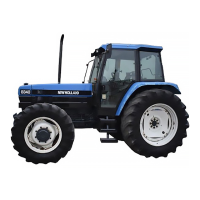
Do you have a question about the New Holland 40 Series and is the answer not in the manual?
| Manufacturer | New Holland |
|---|---|
| Category | Tractor |
| Series | 40 Series |
| Hydraulic System | Open Center |
| PTO Speed | 540 rpm |
| Engine Type | Diesel |
Details components and stamping of the tractor's identification plate.
Provides a chart for decoding production date information based on letters and numbers.
Lists hazardous operations and materials, and necessary precautions for safety.
Details hazards of acids/alkalis and protective measures like gloves and goggles.
Discusses flammability, storage, and handling of various adhesives and sealers.
Covers flammability, usage, absorption hazards, and toxicity of antifreeze.
Addresses asbestos hazards in linings/pads and safe handling during servicing.
General precautions for solvents, adhesives, paints, battery acids, etc.
Lists recommended safety practices when handling chemical materials.
Lists prohibited actions and unsafe practices when handling chemicals.
Details hazards of these materials, spray application, and ventilation.
Covers hazards of dusts from chemical materials or abrasion and use of respiratory protection.
Explains risks of faulty electrical equipment and safety measures.
Discusses toxic components in exhaust fumes and need for ventilation.
Describes skin irritation from fibrous materials and protective measures.
Covers flammability of repair materials, toxic fumes, and fire safety.
Advises on the need for trained personnel in first aid procedures.
Details hazards of uncured foam components, vapours, and fumes.
Covers hazards of gasoline, kerosene, and diesel fuel including flammability and toxicity.
Discusses safe handling, storage, and potential hazards of gas cylinders.
Emphasizes proper maintenance, use, and inspection of tools and equipment.
Lists UK laws and regulations related to health and safety in workshops.
Covers hazards of prolonged contact with oils, especially used oils, and skin protection.
Discusses hazards of one-pack and two-pack paints, pigments, solvents, and spraying precautions.
Addresses hazards of lead fumes from soldering, dust, and personal hygiene.
Details skin contact hazards, eye irritation, and vapour inhalation risks from solvents.
Warns about dangers of working under suspended loads and ensuring equipment adequacy.
Covers hazards of welding processes like metal spatter, fumes, radiation, and gas welding risks.
Covers the overall structure and content of the diesel engine chapter.
Provides details on engine models, cylinders, bore, stroke, displacement, and general design.
Describes the cylinder head, valves, springs, rocker arm shaft, and manifold mounting.
Details crankshaft support, materials, end thrust control, and dynamic balancers.
Describes connecting rod design, construction, and attachment to the crankshaft.
Explains piston construction, material, and ring arrangement for sealing.
Covers intake and exhaust manifold design, placement, and connection to the engine.
Describes the cylinder block material, water jackets, bore machining, and oil pan.
Details crankshaft timing gear, camshaft idler gear, and injection pump drive gear meshing.
Details the engine's oil circulation system and components.
Explains how engine oil circulates through the pump, filter, gallery, and bearings.
Outlines procedures for engine removal and disassembly steps.
Lists common engine problems, their causes, and recommended remedies.
Details the steps for dismantling the engine, including cylinder head and manifold removal.
Describes removal of cylinder head, valves, and associated components.
Details the procedure for removing fuel injectors and associated pipes.
Explains how to disassemble the rocker shaft assembly, including bolt removal.
Outlines the process of dismantling the cylinder head, including valve removal.
Covers checking cylinder head core plugs, cleaning gasket surfaces, and inspecting the mating face.
Details how to check cylinder head flatness using a straight edge and feeler gauges.
Explains the process of examining, refacing, and installing valve seat inserts.
Provides specifications for valve seat angle, width, and head-to-head depth.
Details how to measure valve guide bore clearance and ream them.
Explains checking valve spring squareness, length, and retainer condition.
Covers inspection of rocker shaft for wear and proper re-assembly positioning.
Details inspecting rocker arm screws, push rods, and installing the rocker shaft assembly.
Explains reassembling valves, springs, and push rods into the cylinder head.
Describes installing the cylinder head and manifold gaskets, and bolt tightening sequence.
Details adjusting valve lash for intake and exhaust valves when the engine is cold.
Explains removing the fan belt, crankshaft pulley, and front cover.
Details checking camshaft end play and replacing the thrust plate if needed.
Covers washing gears, examining teeth for wear, and cleaning lubrication holes.
Details installing camshaft gear, idler gear, fuel injection pump, and front cover.
Explains draining oil, removing oil pan bolts, and inspecting the sump.
Describes removing pistons, pins, and rings from the cylinder block.
Covers cleaning, inspecting pistons and rods for damage, and checking for distortion.
Details the procedure for removing and installing connecting rod bushes.
Explains fitting new bushes using standard tools or specific fixtures.
Covers changing cylinder block plugs, sensors, and applying sealant.
Details checking cylinder bores for scuffing, wear, taper, and out-of-roundness.
Explains measuring cylinder bores, honing, and the process of sleeving bores.
Describes checking piston to block height using a dial indicator during re-assembly.
Details aligning pistons to connecting rods and installing piston pins.
Explains checking piston ring gap width at various bore positions.
Details checking the gap between the piston ring and its groove.
Describes installing pistons into the cylinder block, ensuring correct orientation.
Explains checking side clearance of connecting rods to the crankshaft.
Notes that these components can be overhauled with the engine in the tractor or removed.
Details removing the oil pan to expose the balancer and checking backlash.
Covers measuring shaft/bushing diameters and examining gear teeth for wear.
Explains positioning balancer gears, thrust washers, and checking end float and backlash.
Describes gaining access to the crankshaft and removing main bearing caps.
Covers cleaning bearing liners, journals, caps and inspecting for wear or damage.
Details separating the engine from the transmission and checking flywheel runout.
Explains removing the oil pan and rear cover to access engine components.
Describes installing the rear crankshaft oil seal using tools and ensuring proper fit.
Details checking crankshaft seal runout with a dial indicator after installation.
Explains removing the oil pump after the engine has been partially disassembled.
Covers cleaning pump parts, inspecting for wear, and checking clearances.
Details cleaning, coating, and assembling oil pump components and installing it.
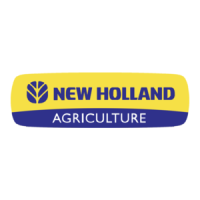

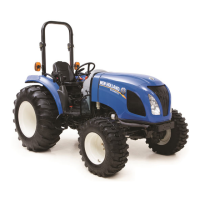
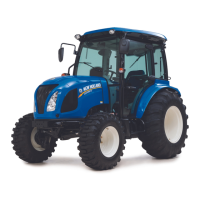

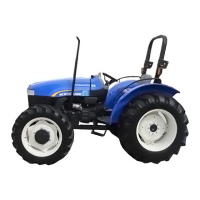
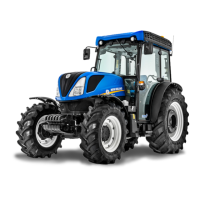

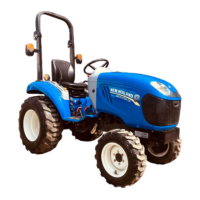


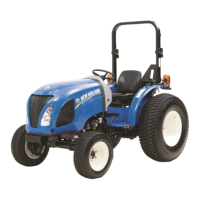
